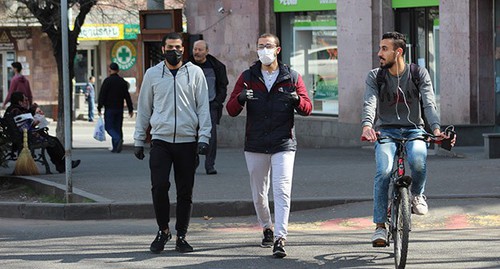
04 May 2020, 23:59
Armenian authorities lift some of coronavirus restrictions
On May 4, the Armenian authorities allowed businesses to resume almost all types of economic activities. Meanwhile, in order to avoid the spread of the coronavirus infection, employers are to secure appropriate working conditions.
As of May 3, in Armenia, the number of the COVID-19 death toll reached 35, while the number of coronavirus-infected people amounted to 2386.
According to the Armenian government's website, citizens of the country will no longer have to fill out a special form when leaving home and carry IDs with them. The ban on travelling between regions will be also lifted.
The authorities allow businesses to resume the operation of restaurants and cafes, shops and factories, hairdressers and beauty salons. However, shopping centres and large markets are still closed. The movement of the public transport is prohibited. Schools and universities are also closed, and students study online.
Meanwhile, businesses are obliged to comply with the epidemiological standards, i.e., to avoid accumulation of employees and not to engaged in the work the people at risk, that is, persons over 65 years old and suffering from a number of diseases.
According to Prime Minister Nikol Pashinyan, the society is to adapt to life with the coronavirus infection. The Prime Minister has noted that until a vaccine is created, new cases of the coronavirus infection cannot be avoided until at least March-April of 2021.
People should demonstrate a high level of civil responsibility, otherwise an outbreak of the epidemic cannot be avoided, the Prime Minister Nikol Pashinyan has added.
Arsen Torosyan, Armenian Minister for Public Health, associated the dynamics of new cases of the coronavirus infection with the active movement of citizens.
This article was originally published on the Russian page of 24/7 Internet agency ‘Caucasian Knot’ on May 4, 2020 at 03:26 am MSK. To access the full text of the article, click here.
Author: Tigran Petrosyan Source: CK correspondent




